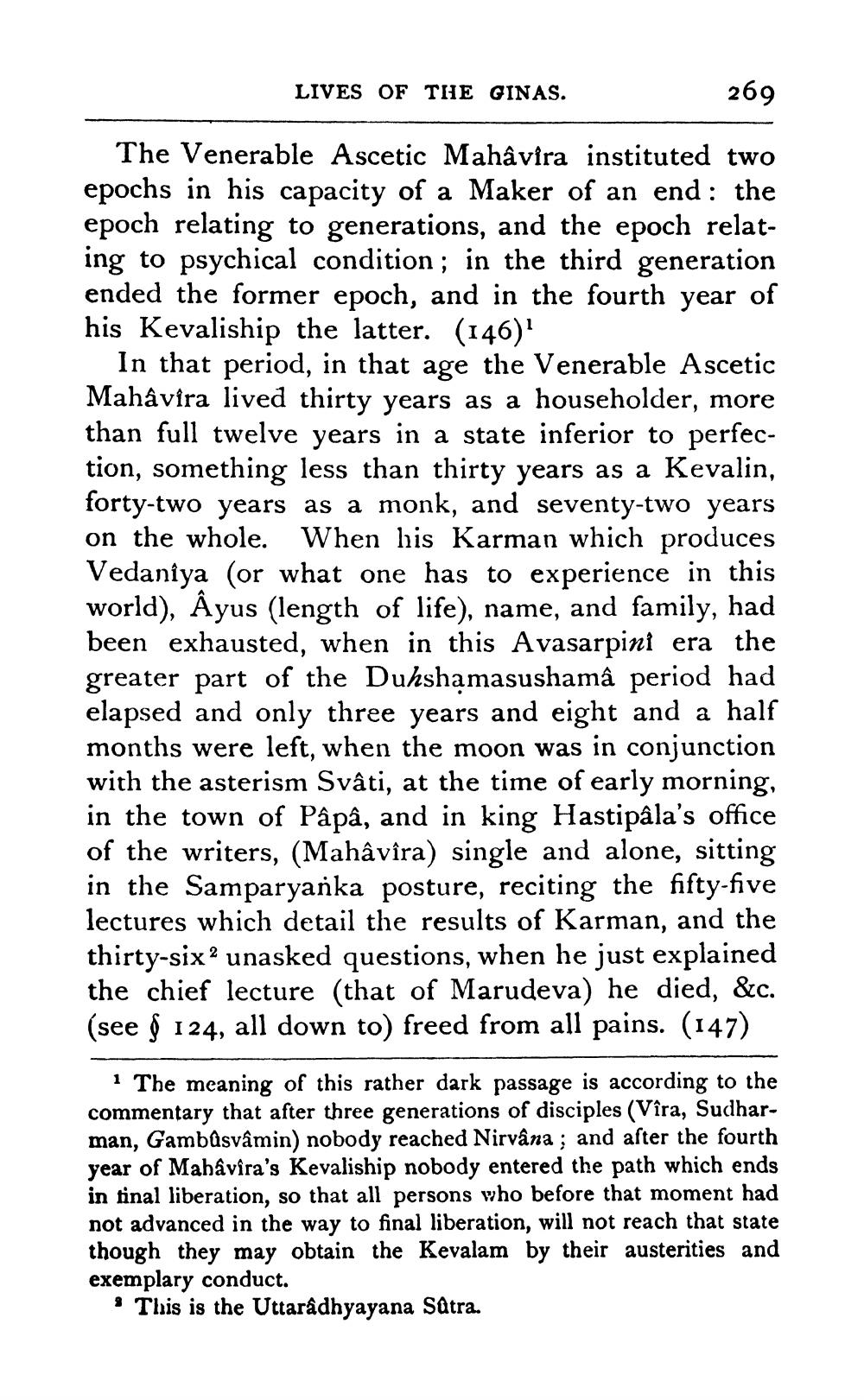________________
LIVES OF THE GINAS.
269
The Venerable Ascetic Mahâvira instituted two epochs in his capacity of a Maker of an end : the epoch relating to generations, and the epoch relating to psychical condition; in the third generation ended the former epoch, and in the fourth year of his Kevaliship the latter. (146)
In that period, in that age the Venerable Ascetic Mahavira lived thirty years as a householder, more than full twelve years in a state inferior to perfection, something less than thirty years as a Kevalin, forty-two years as a monk, and seventy-two years on the whole. When his Karman which produces Vedaniya (or what one has to experience in this world), Âyus (length of life), name, and family, had been exhausted, when in this Avasarpini era the greater part of the Duhshamasushamâ period had elapsed and only three years and eight and a half months were left, when the moon was in conjunction with the asterism Svâti, at the time of early morning, in the town of Pâpâ, and in king Hastipâla's office of the writers, (Mahâvîra) single and alone, sitting in the Samparyanka posture, reciting the fifty-five lectures which detail the results of Karman, and the thirty-six ? unasked questions, when he just explained the chief lecture (that of Marudeva) he died, &c. (see § 124, all down to) freed from all pains. (147)
1 The meaning of this rather dark passage is according to the commentary that after three generations of disciples (Vîra, Sudharman, Gambúsvâmin) nobody reached Nirvâna ; and after the fourth year of Mahavira's Kevaliship nobody entered the path which ends in tinal liberation, so that all persons who before that moment had not advanced in the way to final liberation, will not reach that state though they may obtain the Kevalam by their austerities and exemplary conduct.
This is the Uttaradhyayana Sätra.




